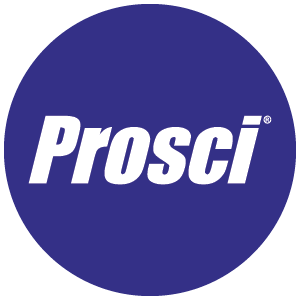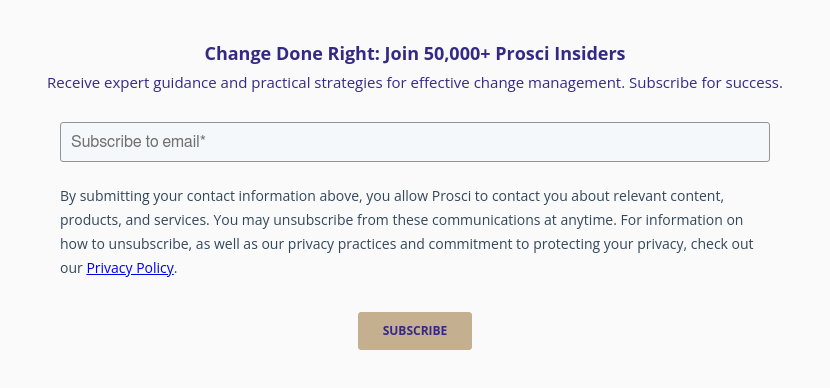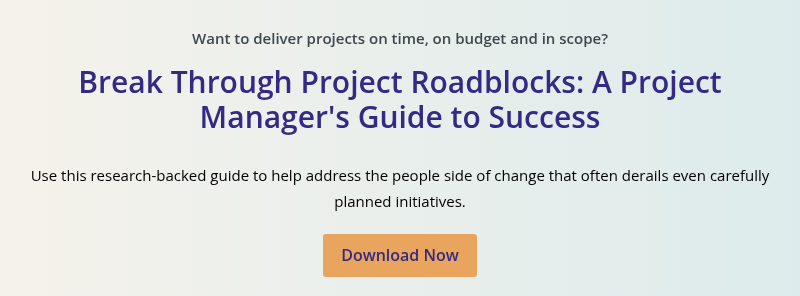How to Integrate Lean Management and Change Management

8 Mins
Updated: April 7, 2025
Published: February 3, 2025

Market conditions can change in the blink of an eye, and organizations that fail to adapt fall behind. To stay ahead, businesses need more than just agility—they need a strategy that turns change into a competitive advantage.
A Lean management approach can be the key to developing that agility and unlocking your organization’s full potential.
Lean management eliminates inefficiencies, streamlines workflows and drives profitability. But without the right approach to change, even the best Lean strategies can stall.
A 2024 Gallup poll found that 70% of workers reported “disruptive” changes across their organizations within the last 12 months—and 64% of those working through a period of organizational change said they were likely to quit.
Optimizations don’t implement themselves. Without a clear strategy for managing change, even the best improvements can meet resistance. Change management is the key to ensuring Lean transformations succeed.
Read on to find out more about how Lean management works, the benefits and challenges that accompany Lean methods, and how change management can be integrated with your Lean management strategy to create sustainable changes within your organization.

What Is Lean Management?
Lean management is a systematic approach to improve efficiency, reduce waste, and maximize customer value. A Lean management philosophy helps businesses achieve these goals by streamlining processes, eliminating activities that don’t add value, and developing a culture of continuous improvement.
Organizations turn to Lean management for a number of reasons.
- It’s a customer-centric approach that aligns efficiencies with organizational objectives and customer requirements. It helps organizations find a happy medium between optimized outputs of the highest quality.
- Lean’s focus on Kaizen (Japanese for “continuous improvement”) helps organizations better engage with their workforce to identify new areas for optimization.
- It provides operations with the flexibility to adapt as needed, enhancing your business's agility. This adaptability allows organizations to respond more effectively to market shifts, emerging opportunities, and operational challenges.
While the concept of Lean management might be new to some business leaders, it’s a tried and tested approach.
Car manufacturer Toyota famously pioneered the Lean strategy as part of its Toyota Production System (TPS). By shifting focus to eliminating waste and making processes easier and more efficient for workers on the factory floor, Toyota developed a just-in-time (JIT) production strategy that enabled the company to make precisely what was needed when it was needed.
In doing so, Toyota established the gold standard for efficient production—an approach that extends far beyond the automotive industry. By applying five core Lean management principles, you can drive efficiency and continuous improvement in any organization.

What Are the Five Principles of Lean Management?
Adopting a Lean management strategy within your organization might sound complicated at first glance. However, this approach is actually built upon five core principles that you’re likely familiar with.

1. Identify value
At its core, the Lean philosophy is about maximizing value while minimizing waste. The first step is to define what "value" truly means from the customer's perspective.
To do this, engage with customers or clients to understand their needs, expectations, and pain points. This insight allows you to align your efforts with what matters most to them.
For example, in healthcare, value might mean reducing patient wait times. In manufacturing, it could mean improving product durability. Clearly defining value ensures resources are focused on activities that directly contribute to meeting customer needs while eliminating inefficiencies.
2. Map the value stream
After identifying areas of value, the next step is to map the processes that deliver them. Value stream mapping provides a visual representation of all the steps involved in producing a product or service.
This helps organizations pinpoint inefficiencies. For instance, in software development, mapping the value stream might reveal unnecessary approval steps slowing down product releases. By identifying non-value-adding activities, teams can either improve or eliminate them altogether.
3. Create flow
A high-performing Lean strategy demands seamless, uninterrupted workflows. Bottlenecks, delays and inefficiencies are roadblocks to growth. By restructuring workflows and balancing workloads, you create a system that runs with precision.
After mapping your processes, you can create more efficient workflows. This involves working with impacted people to restructure processes. However, it’s also important to ensure you support your people in balancing workloads and improving coordination to maximize engagement.
4. Establish pull
A pull system ensures that products or services are created only in response to actual customer demand rather than based on forecasts. This approach prevents overproduction, reduces waste and optimizes resource use.
For example, in automotive manufacturing, Toyota’s just-in-time system ensures parts are supplied only when needed, reducing excess inventory and costs. Adopting this approach allows organizations to remain agile and responsive to fluctuations in demand.
5. Seek perfection
The final principle of Lean is a commitment to continuous improvement. While perfection is unattainable, the goal is to continuously refine processes, eliminate waste and enhance value delivery.
In a Lean environment, clear communication flows are essential for identifying inefficiencies and making incremental process improvements. Establishing a culture of continuous improvement encourages employees to actively seek out opportunities for optimization and contribute their insights.
For example, in customer service, regularly analyzing support ticket resolution times can reveal trends that drive process improvements.
When employees feel empowered to suggest and implement changes, innovation becomes a shared responsibility, driving sustained efficiency and growth.
 What Are the Benefits of Using Lean Management?
What Are the Benefits of Using Lean Management?
In exploring the five Lean principles, we’ve already alluded to some of the core benefits you can expect after successful implementation. To give you a better idea as to how those benefits directly impact your organization, let’s dive a little deeper:
Increase efficiency
Lean management is designed to drive efficiency at every level of an organization. By using process mapping to identify bottlenecks and inefficiencies, teams gain a clear view of where waste occurs. With this insight, they can streamline workflows, eliminate unnecessary steps, and optimize operations for smoother performance.
Greater efficiency translates into tangible benefits—reducing delays, improving customer satisfaction and preventing overproduction. By reallocating resources to high-impact activities, your organization can focus on what truly drives results.
Cut costs
Focusing on the important tasks can enable you to cut operational costs. By spotting and correcting inefficient workflows, your organization can reduce resource waste, generating cost savings.
Likewise, Lean’s JIT approach minimizes excess inventory. That means cutting both storage costs and handling expenses. As a result, your organization will have the ability to lower its operational expenses through resource optimization.
Create higher quality outputs
Lean focuses on delivering value to the customer and ensuring products or services meet expectations. By identifying defects early on, your organization can deliver products or services with fewer errors and avoid the risk of rework.
This is all supported by Lean’s focus on continuous quality improvement, one of the foundational principles in Lean management. By fostering a culture of continuous improvement, identifying incremental improvements in efficiency that will constantly lift the standards of your output.
Speed up delivery times
Lean management is all about flexibility. Because production follows a pull system, your organization needs to be agile enough to adapt to real-time demand. This enables faster customer delivery. You can streamline workflows and reduce lead times by identifying poor workflows and eliminating bottlenecks across your operations. This is further reinforced by Lean’s JIT approach, where customer demand dictates production.
When your organization produces only what customers need, precisely when they need it, it becomes more responsive to shifting market conditions—enhancing both efficiency and customer satisfaction.
Improve employee engagement
Adopting a Lean management style could be the right decision if you’re looking for a way to better engage your workforce.
Lean’s core principle of continuous improvement relies on the organization’s leadership effectively communicating and engaging with every impacted person. Fostering an open culture of continuous learning and innovation empowers employees to challenge the status quo and contribute bold ideas for improvement.
Encouraging collaboration and knowledge-sharing builds trust, strengthening teamwork across all levels of the organization. When employees feel confident voicing their insights, they become active participants in refining workflows, driving efficiency, and shaping the future of your business.

Lean Management Challenges
After breaking down the wide-ranging benefits of Lean, you’ll likely be keen to start using this strategy within your organization. However, even the most effective management approaches come laden with challenges. Lean management is no different.
To help you prepare, let’s take a look at some of the most common challenges organizations face when it comes to Lean implementation:
- Resistance to change – According to Prosci research, lack of awareness is the primary reason for employee resistance to change. This is often made worse by a lack of proper communication from leadership, which can lead to confusion and reluctance. That’s why it’s critical you address the people side of change and work to prevent resistance to change—a fundamental part of the Prosci Methodology.
Preventable Resistance

- Lack of leadership support – Successful Lean transformation requires a strong commitment from every level of management. That means leaders must actively support and promote Lean principles to encourage adoption. Otherwise, the people impacted by the change won’t be motivated to follow suit.
- Low employee engagement – Lean methods rely on continuous improvement, and that requires full employee participation. People need to understand and experience the benefits of optimizations firsthand, or they may feel excluded.
- Shortsightedness – The Lean strategy is a long-term commitment—not a short-term solution. To foster a culture of continuous improvement, organizations must commit to Lean in the long term, even if they don’t see immediate improvements.
It’s fair to say that facing these challenges can be daunting. Change management can offer a helping hand.
 How to Integrate Lean Management and Change Management
How to Integrate Lean Management and Change Management
Where Lean management identifies and addresses the process side of change, change management supports your organization in addressing the people side of it. If you neglect either of these, the challenges can become insurmountable.
That’s why you need to integrate change management into your Lean strategy to create sustainable success. Here’s how:
Align your goals and vision
Start by clearly defining the purpose of the change and how the Lean improvements you’re proposing will benefit employees and customers.
This involves creating a unified understanding of what success looks like for the initiative. This will ensure both your change management and Lean approaches align.
From there, you’ll be better poised to communicate your vision to those impacted by the change—creating a sense of shared commitment.
Apply research-backed change management strategies to Lean
It’s important to incorporate change management principles into the Lean process from the outset. This journey begins with the Prosci ADKAR® Model, which is foundational for achieving successful change.
Developed through more than two decades of change management research, the ADKAR Model includes five elements: Awareness, Desire, Knowledge, Ability and Reinforcement. These elements are crucial for preparing impacted individuals for change and guiding them through the transition by addressing any roadblocks or barrier points.
Prosci ADKAR Model

Here’s how it can be applied to Lean:
- Awareness – Communicate the need for change by explaining why Lean principles are being implemented. Use data and success stories to reinforce your message and build understanding.
- Desire – Involve impacted people in Lean discussions to create a sense of ownership and highlight the benefits for each individual.
- Knowledge – Provide training sessions on Lean principles and tools, and ensure employees have access to tools and materials that support their learning and application.
- Ability – Facilitate hands-on projects and pilot projects where impacted people can learn and practice Lean principles in a controlled environment.
- Reinforcement – Celebrate milestones and improvements achieved through Lean to reinforce positive behaviors and encourage the continued use of Lean. Through this positive reinforcement, you’ll not only sustain change – you’ll create a culture of continuous improvement.
Create a culture of continuous improvement
Change management encourages small, incremental changes that will support you in fostering a culture of Kaizen. Change management strategies, such as the Reinforcement element of our ADKAR Model, can assist leadership in sustaining improvements and creating lasting behavioral shifts.
The Prosci 3-Phase Process provides a structured and adaptable framework for managing the people side of change. This process guides organizations through the essential steps to effectively prepare for, manage and sustain change. By following this approach, organizations can ensure that they track performance over time, review outcomes, and apply lessons learned to enhance future initiatives.
By embedding these change management principles into the Lean process, organizations can create a robust framework for fostering a culture of continuous improvement and ensuring the successful adoption of Lean practices.
Engage leadership and prepare them to lead change
Change management is essential for preparing employees for Lean transformations. It encourages early engagement by involving impacted people across your organization from the outset.
Start by engaging sponsors who can champion proposed changes. Sponsors are critical leaders in the change process, responsible for actively and visibly participating throughout the project, building a coalition of support, and communicating directly with employees. They play a key role in fostering the ADKAR elements—Awareness, Desire, Knowledge, Ability and Reinforcement—among impacted teams.
Your sponsors should collaborate with people managers to develop a comprehensive training plan that equips those impacted by the change with Lean principles and gives them ownership of improvements.
Also, establish a structured communications plan to ensure all stakeholders are informed and engaged. Hold regular meetings and check-ins to monitor alignment on objectives, track progress, and facilitate communication regarding any necessary adjustments throughout the project lifecycle.
Elevate Lean Management With Change Expertise
Lean management transforms operations by eliminating waste and optimizing workflows, but process improvements alone won’t secure lasting results. True impact comes from ensuring people adopt, embrace and sustain change. Without a structured approach to managing the human side of transformation, even the most innovative optimizations risk fading over time.
By embedding change management into your Lean strategy, you eliminate roadblocks, accelerate adoption, and build a workforce that drives continuous improvement. This integration cements lasting efficiency gains and positions your organization for long-term success.
Prosci provides the structure, adaptability, and proven methodology to help your organization navigate change with clarity and confidence. Our approach ensures that Lean-driven improvements take hold, delivering measurable results that stand the test of time.




